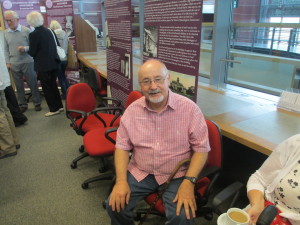
The Stannington Project has been running for the past year but will be coming to an end this week. Over the course of the year we have catalogued all the patient files and the associated administrative files from the sanatorium. We now know that there are 5041 individual patient files and 14,671 corresponding radiographic images. Now that they have all been fully catalogued it is very easy for us to locate files and match them up to their associated radiographs, this is particularly important when dealing with requests from former patients who want to see their own files. The level of detail included in the listing of patient files makes it a useful resource for academic research and allows for the easy selection of relevant cases. Another major part of the project has been the digitisation of all the radiographs and early case files, which is now complete, and discussed in more detail in our previous blog post. The full catalogue and the attached images can all be viewed through the Archive’s online catalogue.
Working through the records over the past year we’ve learnt a lot about how TB affected children in the mid-20th century and some of the individual stories have been fascinating. We hope everyone’s enjoyed reading our blog posts as much as we’ve enjoyed writing them, and keep a look-out for future updates on Stannington and more posts from the WWI Project.
Thank you for reading!










